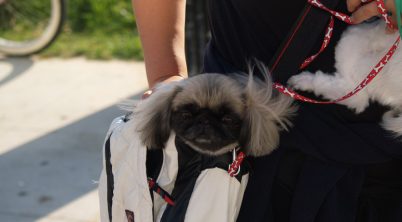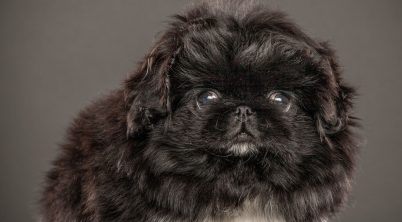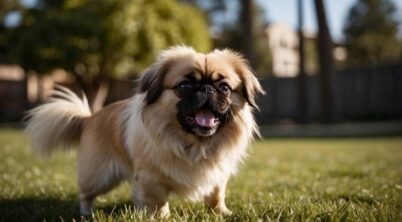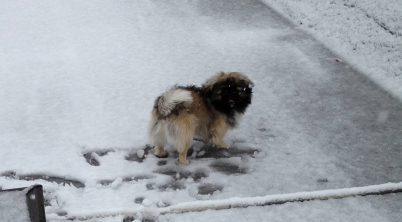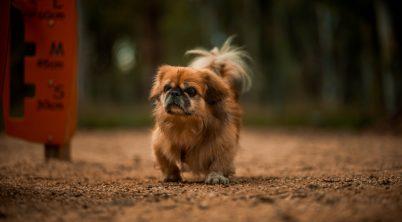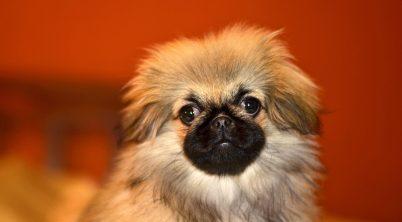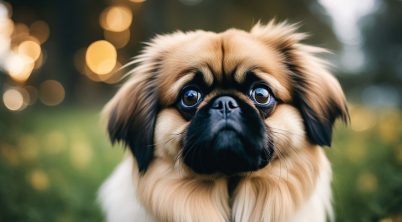The Pekingese breed is a companion dog with a long, rich history stemming from ancient China. Known for their lion-like mane and compact size, these dogs were once revered by Chinese royalty, and this regal attitude still characterizes their demeanor today. Their affectionate and playful nature makes them a sought-after pet for those looking to add a small but confident companion to their family. However, potential owners should be aware of the Pekingese’s particular needs and some of the challenges that come with this breed.
While the Pekingese can be the source of much joy with their loyalty and penchant for forming strong bonds with their owners, they do come with a set of drawbacks. Their luxurious coat, for instance, requires regular grooming and is prone to heavy shedding. Moreover, the Pekingese may present challenges in housebreaking and could be prone to stubbornness, requiring patience and consistent training. Their unique physical structure also predisposes them to a variety of health issues, so vigilant care and regular veterinary check-ups are essential for maintaining their wellbeing.
Owners considering a Pekingese should come prepared for their high maintenance needs, both physical and emotional. Despite their small stature, they have robust personalities and may demand a considerable amount of attention. It’s also important to keep in mind that the inheritance of a Pekingese’s temperament is less predictable than that of their physical traits, thus highlighting the importance of socialization and training in shaping their behavior. The decision to bring a Pekingese into one’s home should be made with full consideration of the responsibilities entailed.
Table of Contents
Pekingese Good and Bad
When considering the Pekingese breed, potential owners should weigh the distinctive characteristics that make these dogs both delightful and challenging companions.
Good Things about Pekingese
- Affectionate: Pekingese dogs often form strong bonds with their owners, displaying affection through cuddling and companionship.
- Playfulness: Despite their small stature, they possess a playful attitude that endears them to many.
Bad Things about Pekingese
- Shedding: The Pekingese has a long, luxurious coat that requires regular grooming and tends to shed heavily.
- Health Concerns: They are prone to a variety of health issues, which can include respiratory problems due to their flat faces, as well as other hereditary conditions.
Physical Characteristics

The Pekingese, a toy breed, exhibits distinct features that set it apart in the canine world. Known for its lion-like appearance, the breed carries a thick coat that can come in all colors and patterns. Regular grooming is essential to manage their long and luxurious fur. This coat not only contributes to their regal appearance but also requires maintenance to prevent matting.
Size is a defining characteristic of the Pekingese. Their weight typically ranges between 7-12 pounds, and they stand approximately 6-9 inches at the withers – their shoulder height. Despite their small size, they have a stocky and compact body shape that gives them a sturdy appearance.
When it comes to their physique, they possess a short face, known as brachycephalic, which is a breed signature, along with their short, slightly bowed legs. These features contribute to a unique rolling gait that is often described as confident and dignified.
| Feature | Description |
|---|---|
| Coat Length | Long |
| Body Shape | Compact and stocky |
| Face | Short, brachycephalic (“squashed”) appearance |
| Legs | Short and bowed |
| Eyes | Large and expressive |
Pekingese have expressive eyes, large and round, which add to their distinctive, alert facial expression. Consideration should be given to the potential for health difficulties due to their faces’ structure, which may include breathing challenges.
The combination of these physical traits contributes to the Pekingese’s unique charm and has maintained the breed’s popularity among dog enthusiasts around the globe.
Temperament and Behavior
The Pekingese breed is known for its unique temperament; they are often seen as dignified and confident, carrying themselves with a regal bearing reflective of their royal ancestry. Despite their small stature, they exhibit a self-assured and independent nature, not easily swayed by external influences. This independence can sometimes be interpreted as stubbornness, particularly during training exercises.
These dogs are inherently loyal to their family, often forming a strong bond with one particular person to whom they show great affection. Due to their deep loyalty, Pekingese can be possessive of their owners, which might lead to wary behavior towards strangers or unfamiliar animals. They are naturally alert and can serve as good watchdogs, announcing visitors with a surprisingly loud bark.
When it comes to their behavior, the Pekingese are not typically playful in the same way some other breeds are, but they do have moments of playfulness, especially when engaged in activities that stimulate them mentally and physically. However, their play style is more dignified, often preferring games that require less roughhousing.
The breed’s sensitivity is a double-edged sword; they respond well to positive reinforcement but can also be easily upset by harsh treatment, necessitating a gentle training approach. Their affectionate nature makes them excellent companions, yet they maintain a measure of independence, often enjoying time to themselves just as much as they enjoy being with their human counterparts.
Health and Care
Pekingese dogs are a small, long-living breed with a typical lifespan of 12-14 years. They are known for certain health challenges that owners should be aware of. Their flat faces can lead to breathing problems, such as brachycephalic syndrome, which might require veterinary attention.
- Eye Diseases: Pekingese have prominent eyes that are susceptible to ulcers and other eye conditions. Daily cleaning with a soft cloth can prevent infections.
- Skin Allergies & Itchy Skin Conditions: Routine grooming helps manage skin conditions. Regular brushing can mitigate shedding and alert owners to skin issues.
A Pekingese’s diet should be well-balanced, adhering to Association of American Feed Control Officials (AAFCO) standards to prevent obesity, which can exacerbate joint and breathing issues. Overweight dogs are more prone to developing joint diseases.
Grooming
Daily grooming is essential to prevent matting of their long, thick fur and to control shedding. This breed requires regular vaccinations and veterinary checks to maintain health.
Health Problems
A Pekingese may encounter various health problems, some of which are genetic, such as joint diseases. Owners should monitor for signs of discomfort or pain.
Weight management and a balanced diet are crucial to minimize the breed’s risk for various health conditions, including breathing problems and joint diseases. Proper care and attention to the Pekingese’s health can ensure this noble breed lives a full and happy life.
Training and Exercise
Training a Pekingese requires patience and consistency. Due to their independent nature, they may exhibit stubbornness, making it crucial for their training to be firm yet gentle. Early socialization and formal training can help mitigate potential resistance. Owners should focus on positive reinforcement techniques to encourage their Pekingese, as they respond well to rewards and attention.
Exercise needs for the breed are moderate. Pekingese benefit from daily walks and play sessions to maintain their health. However, they do not require extensive physical activity – a balance is key. Exercise not only keeps them fit but also channels their energy positively, reducing the likelihood of behavior issues.
Below is an outline of key points to remember for training and exercise:
- Consistency: Regular training sessions establish good habits.
- Formal Training: Consider enrolling in obedience classes for structure.
- Exercise Needs:
- Short walks twice a day
- Interactive play to engage their minds
- Stubbornness: Overcome with patience and persistent, positive training methods.
- Attention: Keep sessions short to match their attention span.
Appropriate exercise and training routines should take into account the Pekingese’s physical conformation, such as their flat face, which can cause breathing difficulties with too much exertion. Therefore, exercise should be light to avoid overexertion and overheating.
Living with a Pekingese
Living with a Pekingese can be a delightful experience for those who understand the breed’s characteristics. Pekingese are known for their regal and affectionate nature, often forming strong bonds with their owners. They adapt well to various living situations, including small apartments due to their size.
For Families
- Children: Pekingese can do well with children who are respectful of their space. Early socialization is key.
- Family Pets: Generally calm around other animals; however, a proper introduction is crucial for household harmony.
Pekingese Attributes
- Calm: These dogs often carry a calm demeanor, enjoying leisurely time indoors.
- Confident Owner: They require an owner who is confident and consistent with training, as they can be stubborn.
Health Considerations Owners should be aware that Pekingese may have health issues due to their distinctive physical structure.
Temperament
- Affection: They are known to be very affectionate, relishing the company of their human companions.
- Independence: Pekingese have an independent streak which requires a patient approach to training.
Home Environment
- Small Spaces: Their size makes them suitable for apartment living, though they do require daily exercise.
- Senior Citizens: They make excellent companions for seniors, as they appreciate a relaxed lifestyle and companionship.
In conclusion, when considering a Pekingese as a pet, it’s important to recognize their need for attention, understanding their health needs, and appreciating their independent yet affectionate nature. With the right owner, a Pekingese can be a joyful and loyal companion.

